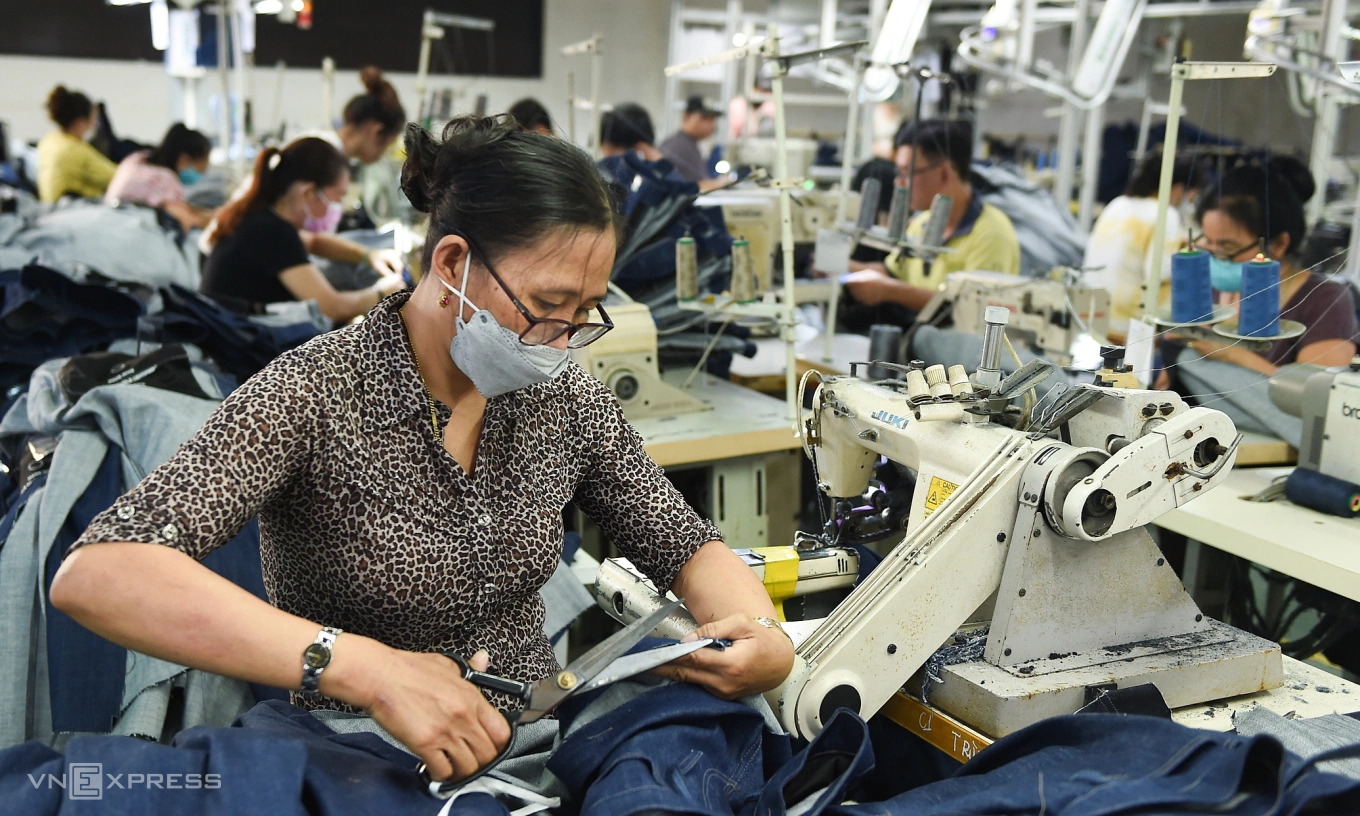The second-quarter and half-year financial reports of several textile companies reveal a brighter outlook for employment in the industry. By the end of June, TNG Investment and Trading Joint Stock Company had nearly 19,700 employees, an increase of over 640 compared to the end of last year.
Sai Gon 3 Group (SGI) and May Song Hong (MSH) also recorded net increases of 285 and 261 employees, respectively, in the first half of this year. Other companies in the same industry, such as Gilimex (GIL), Hoa Tho (HTG), and Hue Textile Garment (HDM), also saw their total workforce increase by over 100. May Huu Nghi (HNI), The Ky Yarn (STK), and Nha Trang Textile Garment (NTT) also added dozens of employees.
This increase in hiring comes as profits in the textile industry rebound. Last year, TNG's profit reached nearly 315 billion VND, a 43% increase compared to 2023. May Song Hong reported a pre-tax profit of 544 billion VND, up 77%. Hoa Tho's profit also improved by 66%, reaching approximately 282.5 billion VND. Other companies also reported significant profit improvements.
Following this momentum, most companies have set ambitious growth targets for this year. Those with consistently good profits aim for further double-digit percentage increases.
Companies whose profits declined or recovered slower than the overall industry are planning for substantial growth this year. Sai Gon 3 Group (SGI) aims for a profit of over 85 billion VND in 2025, nearly 39 times higher than last year. The Ky Yarn is targeting a profit of nearly 310 billion VND, a 25-fold increase. Gilimex estimates a profit of 150 billion VND, 5 times higher than in 2024.
According to data from the General Statistics Office, textile and garment export turnover reached an estimated 18.7 billion USD in the first half of the year, a 13% increase compared to the same period last year. This is the highest export level recorded in the past 5 years, surpassing even the first half of 2022, a period of significant post-pandemic growth. The US remains the largest market with an export value of 8.5 billion USD, an increase of 17.5%, accounting for 45% of the industry's total export turnover. Other markets also recorded positive growth, especially the EU with a rate of over 24%.
Shinhan Vietnam Securities (SSV) suggests that the impressive growth of the textile and garment market is mainly due to "frontloading" of imports before tariff changes, leading to a significant increase in orders. In addition, back-to-school shopping demand arrived early. The trend of shifting orders away from China is also growing. Meanwhile, domestic businesses continue to effectively leverage the advantages of free trade agreements (FTAs).
 |
Workers at a garment company in TP HCM. Photo: Thanh Tung |
Regarding tariffs, Vietnam faces a general rate of 20%, significantly lower than competitors like China and India, and on par with Bangladesh and Indonesia. SSV assesses that with this tariff level, Vietnam's textile industry will not be negatively impacted and is fully capable of maintaining its market share in the US thanks to its irreplaceable competitive advantages in the short term: a strong production capacity with the ability to supply high-tech products, diverse items, large-scale capacity, and fast delivery; and Vietnam also enjoys tariff preferences in many markets thanks to its FTA network.
"We expect businesses to know how to promote their existing advantages and proactively enhance their competitiveness in areas such as origin, ESG, etc., aiming for sustainable long-term development," the analysts stated.
In fact, many textile companies have reported having enough orders for Quarter III and nearly full orders for the last quarter of the year. Besides the US market, many businesses are seeking customers in EU countries, CPTPP members, the Middle East, South America, and Russia.
However, the industry still faces risks as East Asian markets like Japan and South Korea have not shown clear signs of demand recovery. For companies that are slow to increase localization rates or meet ESG criteria, their competitive advantages may be significantly reduced.
Tat Dat












